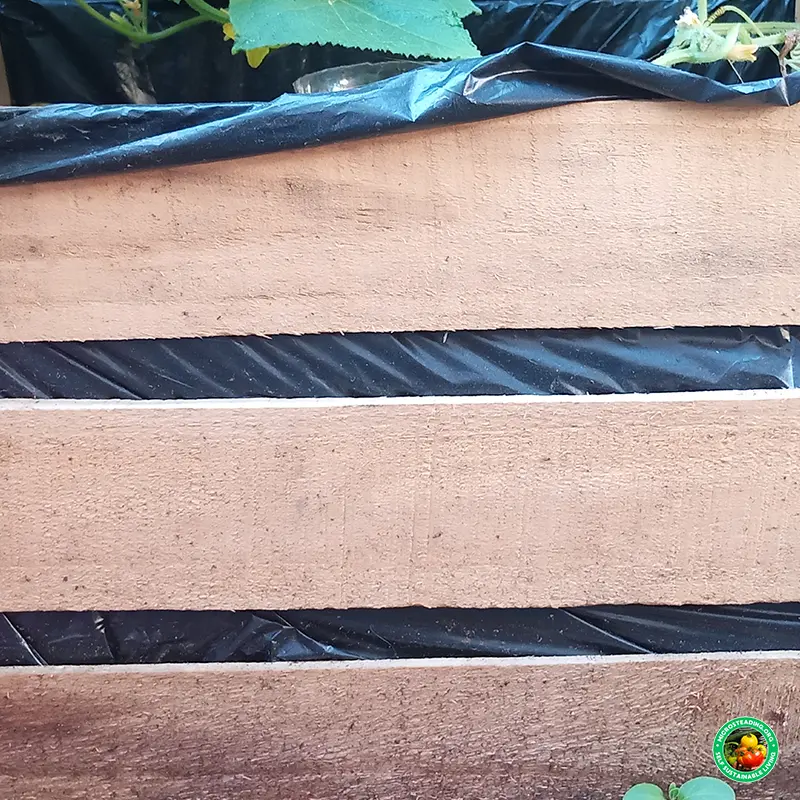Micro-Raised Beds: Scalable Growing for Tight Outdoor Spaces
So, you're microsteading, not homesteading. That means space is precious, every square inch counts, and your setup probably lives on a patio, a rooftop, or a balcony. But what about raised beds? Aren't those just for people with actual land?
🛑 Hold on. Let's bust that myth right now.

Raised beds can absolutely be part of your microstead — if you rethink how they're used. This isn't the "till-an-acre" kind of raised bed you see on rural YouTube channels. This is the compact, self-contained, elevated, efficient kind of system that lets you grow more without taking over your space (or breaking your back).
Let's dig in.
🧱 Why Raised Beds Still Belong on a Microstead
Most people think raised beds are for big gardens. However, they can be an incredible asset for urban growers, apartment dwellers, and tiny-yard tinkerers—especially when designed small and smart.
Here's why they work:
-
🌿 Containment – keep your soil, roots, and amendments exactly where you want them.
-
🧍♂️ Ergonomics – raise your plants to a better height for less bending and strain.
-
💧 Water control – better drainage in wet climates, better retention with wicking hacks.
-
🪟 Flexibility – build it where you need it, move it if you need to.
📏 Think Small: Micro-Sized Raised Bed Ideas
Forget the giant cedar rectangles from big-box stores. These are microbeds — raised beds done Microsteading-style:
-
📦 2×2 or 2×4 DIY Frames – Perfect for patios, rooftops, or even driveways.
-
🪚 Repurposed Crates – Old wine boxes, dresser drawers, or milk crates with liner.
-
🚗 Mobile Beds – Add castor wheels to a raised box and grow where the sun goes.
-
🔼 Tiered Stacks – Build vertically with staggered layers to fit more in less space.
The goal isn't size — it's control and accessibility. You're still thinking like a microsteader — just with a few extra inches of soil depth. 😉
🧰 Building a Micro-Raised Bed: Low-Cost, Low-Fuss
Here's how to whip up a solid microbed without spending a fortune:
-
Frame it – Use pallet wood, cinder blocks, or 2×6 planks. Aim for 6"–12" deep minimum.
-
Line it – Weed cloth, old tarp, or even feed bags can work as liners for balconies.
-
Drain it – Drill holes or lift the bed slightly off the ground for airflow and water movement.
-
Fill it – Use a mix of compost, coconut coir, perlite, and native soil or potting mix.
💡 Pro Tip: Drop a BottleCore™ irrigation insert in before filling with soil. It'll save you loads of watering time. (Link to your /bottlecore-irrigation.php page here.)
🌱 What to Grow in Micro-Raised Beds
You're not trying to feed a family of six from a single box, but you can grow a surprising amount if you use smart spacing and companion combos.
Try these:
-
🥬 Leafy greens like spinach, lettuce, kale
-
🧄 Garlic, onions, and radishes
-
🌿 Herbs galore: basil, cilantro, thyme, oregano
-
🥕 Carrots (short varieties work best in shallow beds)
Use square-foot gardening grids or planting blocks to avoid overcrowding, and tuck smaller plants around the borders of taller ones.
🌼 Want beauty and function? Add some ornamental edible flowers like nasturtiums, pansies, or calendula to the corners.
💡 Microsteading Hacks to Enhance Your Raised Beds
This is where your setup starts looking seriously dialed in:
-
💧 Wicking System Add-On – Line the bottom with water reservoirs or install a wick for passive hydration. (See
/containers/wicking-systems.php) -
🎯 Portable Builds – Put your bed on casters to chase sunlight or move during storms.
-
🛡️ Low Tunnels – Add hoops and insect netting to turn it into a mini greenhouse.
-
📦 Reclaimed Wood Framing – Use materials you already have — pallets, fence boards, etc.
Everything about your microstead should reflect efficiency, reuse, and control. Raised beds don't have to be the exception.
🔚 Final Thoughts: Raised Beds the Microsteading Way
Look — raised beds aren't just for people with land. When scaled and designed the right way, they're one of the most valuable tools for growing more in less space, with more control and way less maintenance.
In a way, they're just elevated containers. And as a microsteader, you already know how powerful container gardening can be.
So if you've got a little extra space, try building a micro-raised bed. Even a single 2×2 box can feed you for months.
🌱 Start small. Think smart. Grow your future, one square foot at a time.
Frequently Asked Questions
Not at all. While traditional raised beds are large, microsteading focuses on compact versions — like 2×2 or 2×4 setups — that fit patios, rooftops, or even balconies.
You can use pallet wood, cinder blocks, reclaimed fence boards, or even old dresser drawers. The key is drainage, soil depth, and fitting your space.
Not if you're scaling down! A 6–12 inch deep bed is usually plenty for herbs, greens, and shallow root crops. You can even fill part of the base with sticks or compostables to reduce soil volume.
Leafy greens, bush beans, herbs, radishes, garlic, onions, and short carrots all do well. You can even companion plant for maximum harvest in tight beds.
Absolutely. You can add a bottlecore irrigation system or install a wicking layer in the bottom of the bed. These passive systems keep your soil evenly moist without daily watering.
